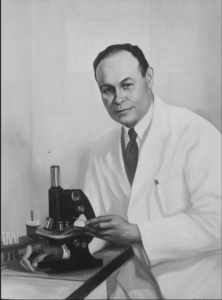10 Charles Richard Drew
Dr. Charles Richard Drew |
 |
Time period:1904-1950 Subject:Medicine, Chemistry, and Biology |
|
Biography:Dr. Charles Richard Drew was an African American physician, surgeon, and medical researcher who made significant contributions to the field of blood transfusions and blood banking. He was born in 1904 in Washington, D.C. Drew excelled academically and athletically, earning a scholarship to Amherst College for football and track and field. He faced racism and segregation in both athletics and in academics, despite excelling in both. After completing his undergraduate degree, he pursued medical studies at McGill University College of Medicine, who had a better reputation for treatment of minority students. He earned his Doctor of Medicine and Master of Surgery in 1933, graduating second in his class. He had an interest in blood transfusions, and wanted to work at the Mayo clinic, but unlike all Black scientists, he was barred from pursuing this. He began to work at Howard University School of Medicine as a professor and studied at Columbia University to pursue a doctorate degree. |
|
Summary of their contributions:At Columbia, his work focused on the preservation of blood plasma. He discovered that blood could be preserved longer once the plasma and the red blood cells were separated. This innovation was crucial as it allowed blood to be stored for an extended period of time, making it readily available for transfusions. As World War II broke out in Europe, Drew played a pivotal role in the “Blood for Britain” project, where he organized the collection and processing of blood plasma for the British Military, saving countless lives. He is known as the “Father of Blood Banking”. For the American Red Cross, he worked on developing a blood bank for U.S. military personnel, but fought against the group’s persistence that Black and White blood must be segregated. Frustrated, he resigned in protest due to the refusal from the organization to end this practice. Months after his death in 1950, the Red Cross ended the segregation of blood, ending the racial injustice that Drew fought for. |
|
Integration with the BC Secondary Science Curriculum:Dr. Drew’s work can be incorporated into the BC Secondary Science Curriculum within Anatomy and Physiology 12. When teaching the circulatory system and the components of blood, Drew’s contributions to the field of blood transfusions and medicine can be incorporated. The lesson can incorporate the physiological and anatomical aspects of blood, exploring its composition, functions, and importance to human health. Teaching about Charles Richard Drew in Physiology and Anatomy 12 can address multiple curricular competencies:
By drawing parallels between Drew’s legacy and the curriculum’s core concepts, students not only gain a deeper understanding of the physiological intricacies but also recognize the transformative impact Drew had on shaping medical practices and driving innovation. |
|
References:Biography. (2020, September). Charles Drew – Life, Family & Inventions. https://www.biography.com/scientists/charles-drew National Institutes of Health. (n.d.). Education and early medical career, 1922-1938 | Charles R. Drew. U.S. National Library of Medicine. https://profiles.nlm.nih.gov/spotlight/bg/feature/education |
|

